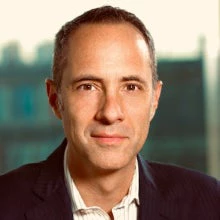
I am sitting in a conference room in Panama and the room is so cold it just might start snowing. I can barely write, my fingers are so stiff, and this makes me wonder about the psychology of being cold in a hot climate…about the excessive use of energy while oil hovers around US$86 per barrel and the Earth’s temperature creeps higher.
Since it is often beyond a question of comfort, is it a statement about our rights to consume, about our control over our environment, about wealth? Whatever the cause, the citizens of Mexico City and Managua share the habit with those of Manila and Miami.
The use of power expresses itself as a sign of power. ....And so, too, the use of the automobile. One hundred and fifty years ago, in “Song of the Open Road,” Walt Whitman wrote
“O public road …
You express me better than I can express myself.
From this hour, freedom!
Pausing, searching, receiving, contemplating
Gently, but with undeniable will,
divesting myself of the holds that would hold me.”
This poem remains a celebration of the opportunity that the highway provides. Across the Americas, the relationship between personal freedom and physical movement—especially the kind provided by a car on an open road—has become part of our DNA.
Latin America and the Caribbean has the highest rates of motorization of any region in the world—about the same as China at nearly 4.5 percent per year. Unlike China, however, the majority of our population already lives in cities.
Since 78 percent of LAC’s population is urban, this means that the region’s municipalities are clogged, polluted and getting worse. So too are the arteries that connect the cities. In energy generation, Latin America runs the risk of losing its green mantel from its baseload of hydropower and natural gas. With demand for the region’s energy growing historically about 1.5 times faster than economic growth, big investments in generation are on the horizon.
We estimate that the region will need the equivalent of 5 Itaipu’s over the next 8 years… and there are only so many large rivers to dam in Latin America. Greater energy efficiency, as well as scale economies from regional markets, may abate that growth, but growing (i.e, with power) green (i.e, with renewables and low emitting technologies) will require a re-thinking of the region’s common practice of subsidizing fuel prices upstream and electricity prices downstream.
In the absence of a carbon tax, it may also mean more regulatory incentives and feed-in tariffs that reflect the full benefits of cleaner generation. In our last two discussions, we looked at the relationships between infrastructure and growth and between infrastructure and social inclusiveness—and we found the relationships to be positively correlated in both cases.
But what about infrastructure and the environment? Can we “grow green” with the help of infrastructure or does infrastructure investment always mean more power, more cars, more emissions, more environmental degradation?
In fact, infrastructure investments that balance economic, social and environmental needs do happen—and they are happening with increasing frequency in Latin America and the Caribbean—in urban transport, in energy production and in freight transport.
Better Transport Systems
Bus Rapid Transit systems are springing up across the region like grass in the cracks of pavement—not only in Bogota, Santiago, Mexico City and Lima, but in the secondary cities of Colombia, Brazil and Mexico. Costa Rica may be next.
Upcoming research from the World Resources Institute on urban transport in Mexico City illustrates how expansion of “Metro-Bus”—the dedicated bus lanes and services of the Metropolitan Area—has helped reverse a 15-year trend of increased dependence on polluting micro-buses, stemming the growth in emissions.
People and the environment benefit from better mass transit, and when cities become healthier, safer and less congested, investment and economic growth are likely to respond.
What has been missing so far is the integration of these mass transit projects into land use planning—planning that would densify cities, curb peri-urban sprawl and bring scale to basic urban service provision. To be truly transformative, the next generation of these investments will require greater forethought and integration into the urban landscape.
In freight transport, the greenness of the investment follows the incentives and options that shippers have when moving cargo. When they are faced with the true cost of fuel, including the costs of pollution, firms often decide on their own to seek more efficient modes. Cargo moves from small trucks to large trucks, and from large trucks to railroads and waterways.
The expansion of the Hidrovia system along the Parana-Paraguay Rivers will allow more ships and barges to move grains hundreds of kilometers. It takes hundreds of trucks off the roads of the Southern Cone--and carbon out of the air.
Realistically, the vast majority of the region’s freight will continue to move by truck, so greening the freight haulage industry itself will be a necessary step in the process of green growth. This means enforcement of tailpipe regulations, incentives for upgrading truck technologies, and training for drivers. The World Bank is now helping the Government of Brazil to build a strategy for greening the trucking industry… a regional example that will spread in the years ahead.
Phew.
In three blogs, we raced through the Triple Win, finding that investments in infrastructure can potentially (1) spur Growth that is (2) Inclusive and (3) Green. But, as I’ve learned from your posts and comments, we also have to admit that there is no easy recipe, that investments that are inclusive and green include costs—typically, the loss of a subsidy—that consumers and/or taxpayers may have to bear in the short-run.
I also read in your posts an observation that Walt Whitman would have appreciated: It is the human component—planning, coordinating, educating, changing behavior—that remains our greatest challenge.


Join the Conversation